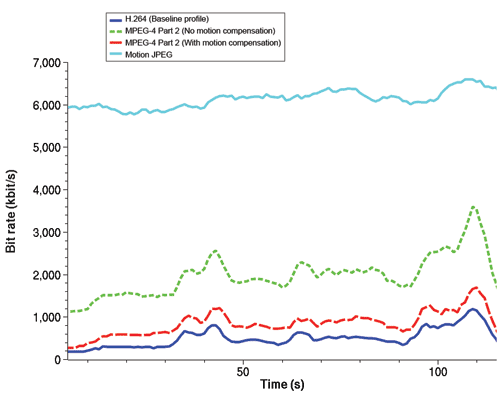Hard Disk Drive (HDD) is a magnetic media storage device for recording digital information (like that used by computers or digital DVR video recorders).
HDD Capacity indicates the amount of information which can be stored on hard disk drive. This figure is measured in bytes. 1 GB = 1016 MB = 1032256 KB = 1048772000 bytes.
HDD Speed indicates the speed at which a hard disk drive is capable of encoding information. While many DVR sellers only use inexpensive, slow generic HDD drives (typically 5400 RPM with no buffer in place), DVR recorders are only equipped with 7200 RPM hard disk drives with 8 MB buffers from trusted brand names like Seagate, Western Digital, and Maxtor.
Homing a term used to describe a type of automatic sequential switcher, which will stop sequencing and remain on a single CCTV camera input displayed on the monitor when a switch or button is depressed. This switcher has only one monitor output.
Housing Protective enclosure that a camera can be placed in to protect it from outside weather conditions.
Hue Corresponds to colors such as red, blue, etc.
Hz (hertz) is a measure of frequency (indicates cycles per second in an electronic or RF signal). 1 GHz = 1000 MHz = 10,000 KHz = 100,000 Hz.
H.264 is a standard for video compression. It is also known as MPEG-4 Part 10, or AVC (for Advanced Video Coding). It was written by the ITU-T Video Coding Experts Group (VCEG) together with the ISO/IEC Moving Picture Experts Group (MPEG) as the product of a partnership effort known as the Joint Video Team (JVT). The ITU-T H.264 standard and the ISO/IEC MPEG-4 Part 10 standard (formally, ISO/IEC 14496-10) are jointly maintained so that they have identical technical content.
H.264
The latest video compression standard, H.264, is expected to become the video standard of choice in the coming years. It has already been successfully introduced in electronic gadgets such as mobile phones and digital video players. For the video surveillance industry, H.264 offers new possibilities to reduce storage costs and to increase the overall efficiency. H.264 (sometimes referred to as MPEG-4 Part 10/AVC) is an open, licensed standard that supports the most efficient video compression techniques available today. Without compromising image quality, an H.264 encoder can reduce the size of a digital video file by more than 80% compared with the Motion JPEG format and as much as 50% more than with the traditional MPEG-4 Part 2 standard. It is the magnitude of these numbers that makes H.264 highly relevant for video surveillance applications.

Bit rate comparison for a 115 seconds video stream, given the same level of image quality, among different video standards. The H.264 encoder was at least three times more efficient than an MPEG-4 encoder with no motion compensation and at least six times more efficient than Motion JPEG.
Reduced storage and bandwidth costs
One immediate benefit of the drastically reduced file sizes is the impact on storage and bandwidth requirements. For the same amount of video data, with the same image quality, a video surveillance system supporting H.264 compression will basically reduce the storage cost and bandwidth occupancy by at least 50% compared to when using conventional compression technologies. As the systems grow larger, and the requirements for high resolution images in combination with high frame rates increase, H.264 will be a key differentiator between various system solutions.
Higher resolution and frame rate
Depending on application needs, there are various ways to benefit from the impressive compression rate of H.264. Today, it is common to choose a limited frame rate or lower resolution in order to stay within the specified storage limitations of an application. This has a negative impact on the video images, which become either blurry or less detailed. Introducing video surveillance equipment that support H.264 compression in such an application will enable several combinations of increased frame rate and image resolution, thus providing higher image quality.
Accelerating use of megapixel cameras
H.264 is expected to accelerate the adoption of megapixel cameras within the surveillance industry. One of the current trade-offs of megapixel cameras is the large size of the recorded video data. As mentioned above, H.264 reduces the large file sizes without compromising image quality. It is likely that the highly efficient compression technology find the quickest traction in applications where there are demands for both high resolution and high frame rates, such as in the surveillance of airports, retail stores, banks and casinos.
Looking ahead
H.264 presents a huge step forward in video compression technology. With support from many industries and applications for consumer and professional needs – e.g. QuickTime, Flash, YouTube, iPod and Play- Station 3 – H.264 is expected to replace other compression standards and methods in use today. As the format becomes more broadly available in video surveillance equipment, system designers and integrators will need to make sure that the products and vendors they choose support this new open standard.
Origin of H.264
H.264 is the result of a joint project between the International Telecommunications Union’s Video Coding Experts Group (VCEG) and the ISO/IEC Moving Picture Experts Group (MPEG). ISO stands for International Organization for Standardization and IEC is an organization that oversees electronic and electrical standards. H.264 is the name used by ITU-T, while ISO/IEC has named it MPEG-4 Part 10/AVC since it is presented as a new part in its MPEG-4 suite.
Jointly defined by standardization organizations in the telecommunications and IT industries, H.264 is expected to be more widely adopted than previous standards.
Hub As a network product, a hub may include a group of modem cards for dial-in users, a gateway card for connections to a Local Area Network (LAN), and a connection to a line. |